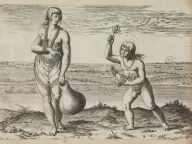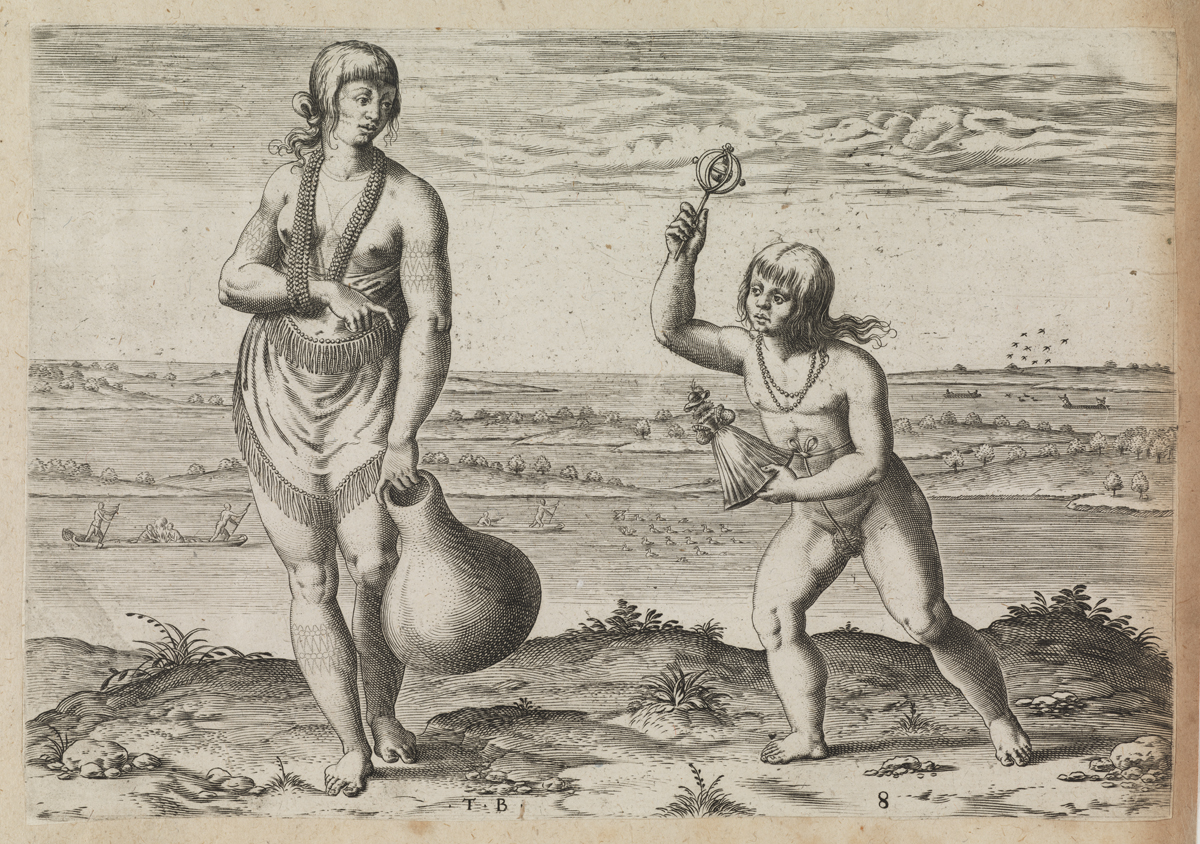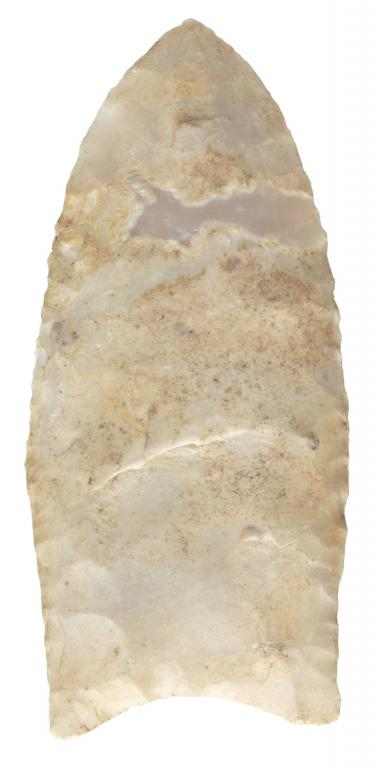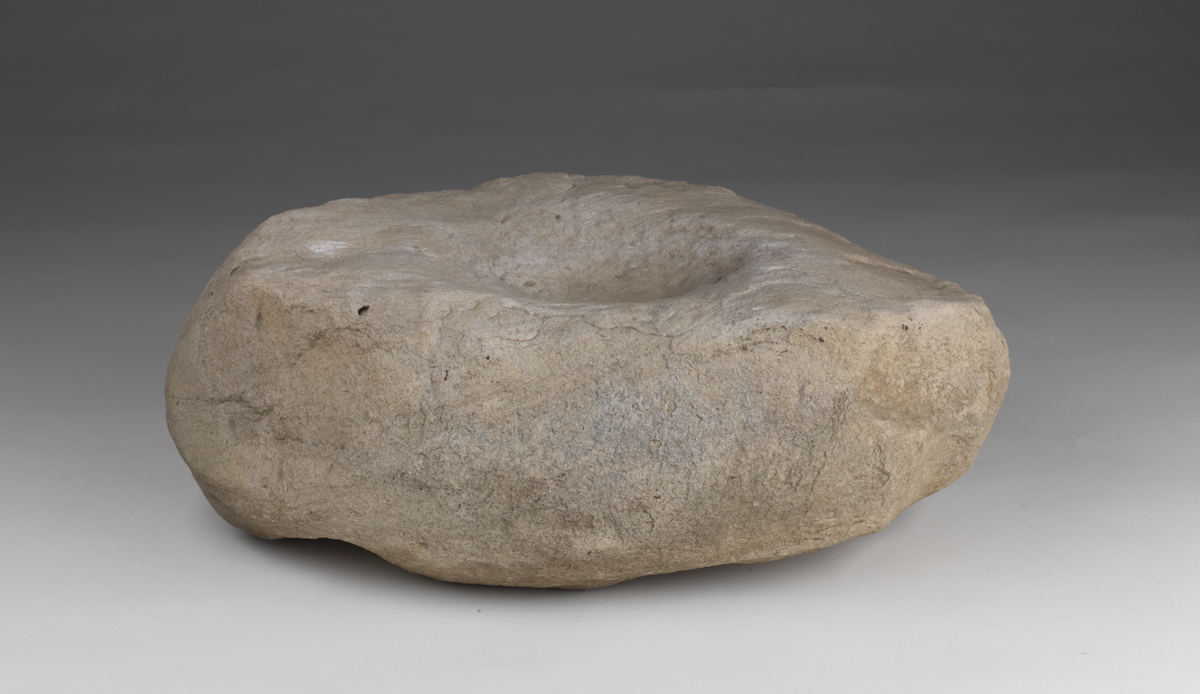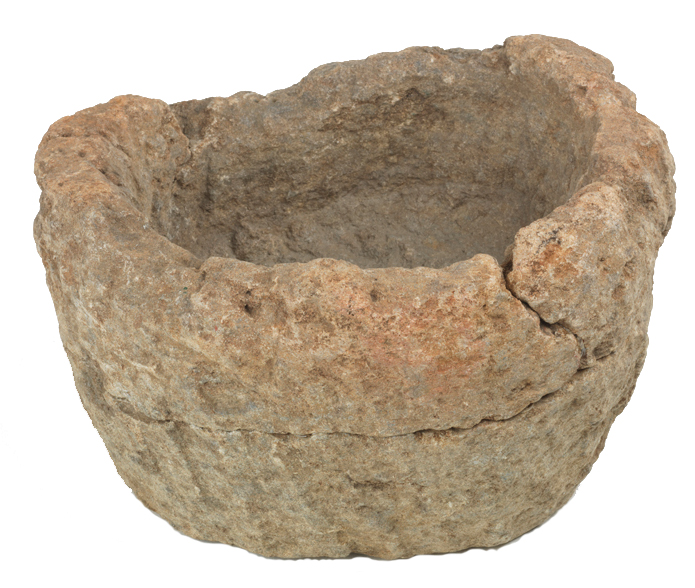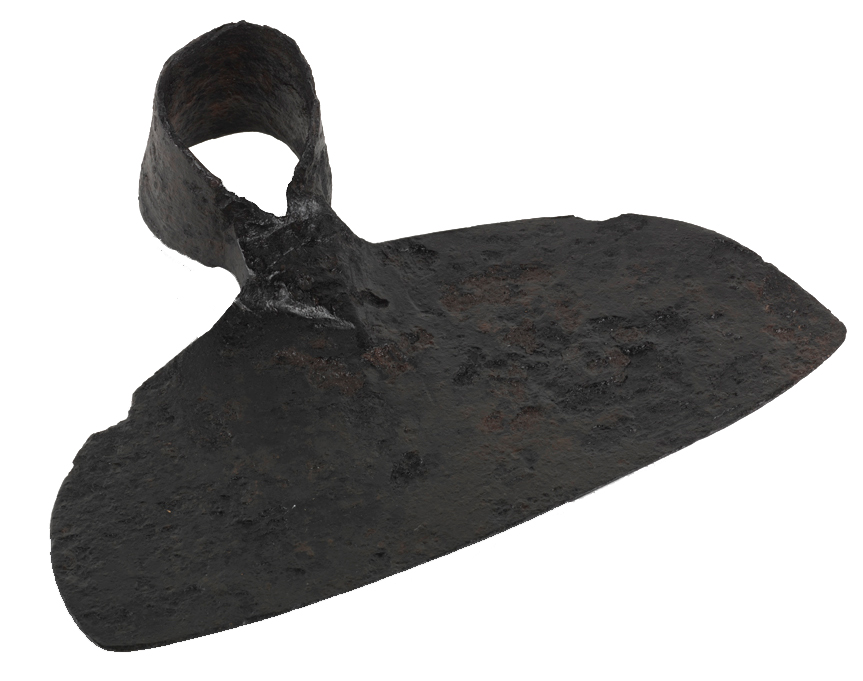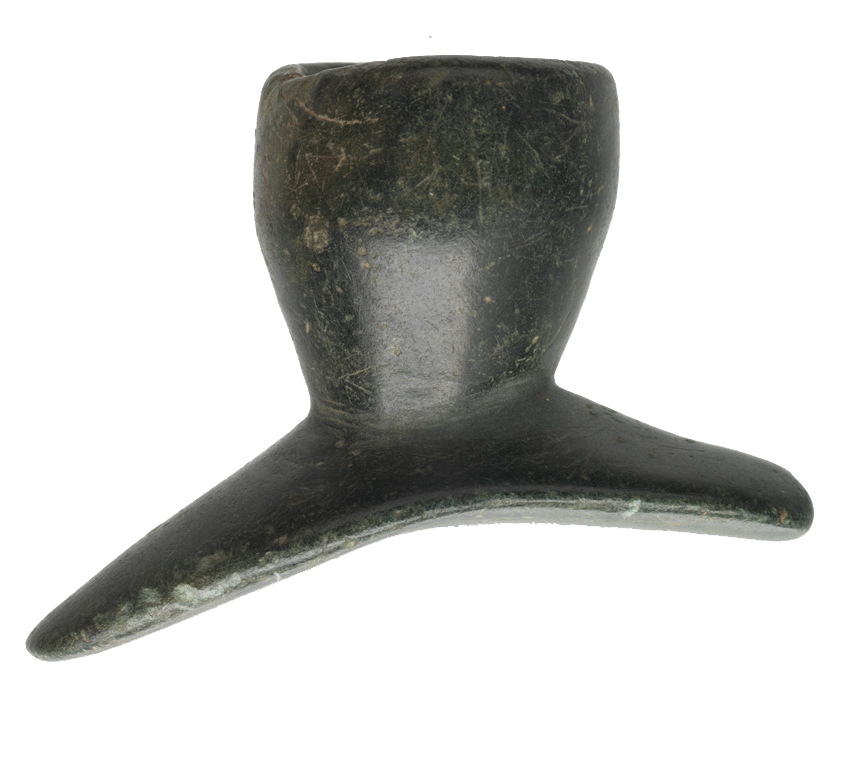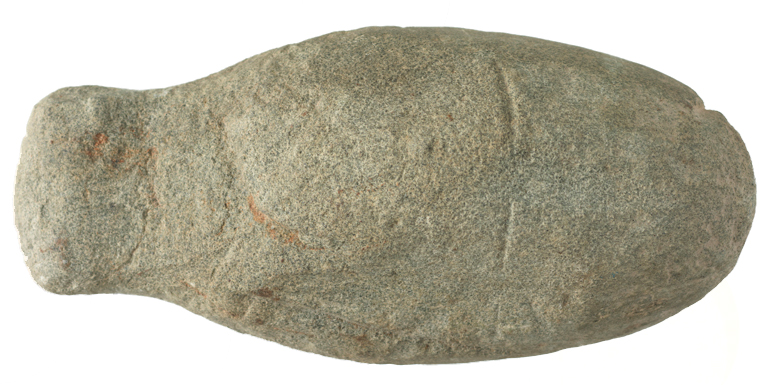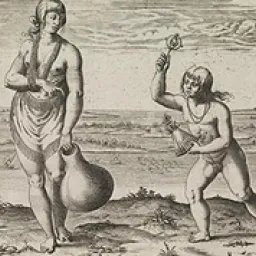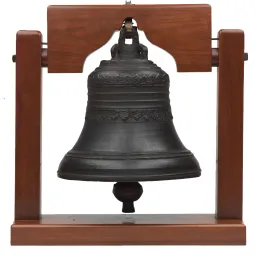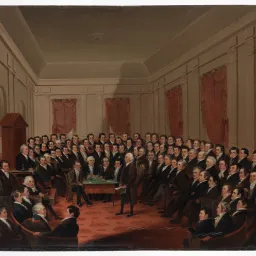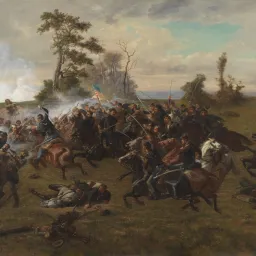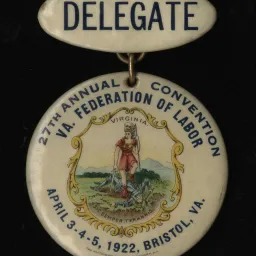16,000 BCE to 1622 CE
Wandering, Foraging, and Farming
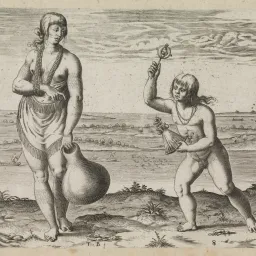
Over more than 16,000 years, Virginia Indians transitioned from nomadic bands of hunter gatherers to sedentary farmers.
Indian societies evolved from small bands to larger tribal identities and later chiefdoms. This change resulted from innovations in technology, increasing population, and a warming climate. Spears gave way to atlatls, allowing hunters to kill at a distance. Later, agriculture created a number of stratified societies, with priests conducting religious ceremonies for many occasions, including the planting and harvesting of crops.
From Where and How?
Discoveries at Cactus Hill (Sussex County) in the 1990s undermined a theory that humans first arrived in the Americas 13,000 years ago, traveling from Siberia via a temporary land bridge across the Bering Strait. Stratified sequences date Cactus Hill 5,000 years earlier, before falling sea levels exposed the bridge. Scholars now propose that people may have skirted along pack ice on either the Pacific or Atlantic coast, or both.
Although native cultures changed over thousands of years, the motivation and resources of Virginia Indians remained the same. Their reliance on stone for tool construction was consistent through multiple periods of time even as their methods for shaping stone evolved. Improvements in technology facilitated the acquisition of food, whether from hunting or agriculture.
More Food for More People
Even with the end of the Ice Age, the environment continued to change. Temperatures climbed, sea levels rose, precipitation increased, and by 8000 BCE hardwood forests provided a greater variety of nuts, berries, and fruits for foraging. Large mammals were by now extinct, but Early Archaic people gathered together in resource-rich areas where they could fish and hunt.
Archaic Age families, though mobile, tended to stay within smaller, fertile woodland areas. The stone axe—a new tool—made the cutting of wood for fires and shelter easier. With the axe and fire, forests were altered into environments that attracted animals that fed on the new growth. These animals were hunted by humans using the superior technology of the atlatl.
A Woodland Culture Develops
Beginning around 1200 BCE, people in Virginia became more sedentary as they developed an agricultural tradition and an understanding of how to make and utilize pottery. Growing corn required people to settle near the fields they cultivated. Clay pots, which proved superior for cooking, could also be used as dry containers to store food for a growing population.
Before the middle of the Woodland Period there was little difference between the tribes scattered across Virginia. However, as agriculture began to provide most of their food, people developed stronger local identities centered on village life. By the Late Woodland Period, the town of Werowocomoco had developed as an important site that would eventually become the epicenter of the Powhatan Chiefdom.
The rise of agriculture and village life brought stability to communities, allowing them to become socially and politically complex. Procuring food took less time; people were able to specialize in other skills. Some communities became associated with the production of pottery or with making shell beads; such output became part of a tribe’s cultural identity. Surpluses of material goods facilitated new trading networks.

